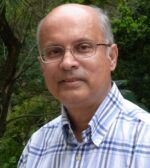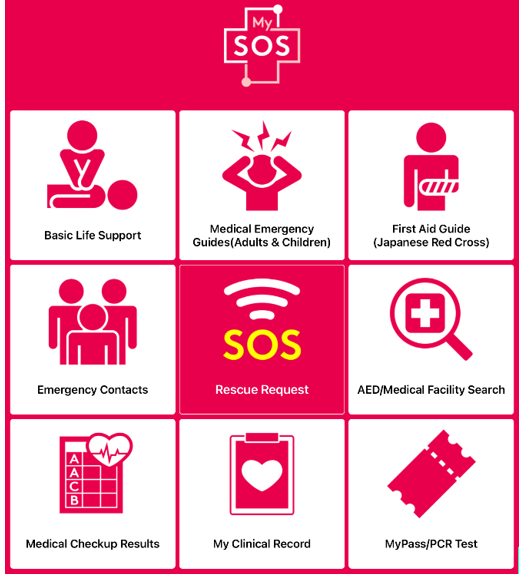Nightmarish Travels and Travails during Covid – By GEORGE BRAINE

Since moving to Sapporo, Japan, in 2019, I had not been to Sri Lanka in two years. Not seen or spent time with my sister Beula; my cousin Marie and her husband who were my neighbors; their son and his family; a 95-year old aunt and her family; my friends Victor, Eileen, and a few other friends and relatives, some elderly, others ailing, some both.

I missed “Pondside”, the greenery around my small home there, the sound of the birds and the crickets, the mangoes and other fruits, delicious meals loaded with coconut curry prepared by Indra, my housekeeper. I missed sitting on my verandah and watching the world go by, the daily visits and con chats with distant relative Ignatius. I missed travels with Gamini, my part-time driver, chatting with him for hours as he drove. I missed the rain on the roof, the fresh water from the well.
So, I planned a visit to Sri Lanka, initially in August, which had to be postponed due to a severe outbreak of covid there. I knew it could be the most difficult of my travels; countries were changing covid regulations frequently, and I could be delayed or even stalled somewhere en route. I had read enough horror stories, about hellish quarantine regulations, for instance. At my age, carrying a supply of insulin on ice for my diabetes, air travel was always a challenge to begin with.
After the covid situation in Sri Lanka stabilized, I made a reservation in mid-October on Sri Lankan Airlines from Tokyo to Colombo. The day before departure, the airline suddenly cancelled the flight, forcing me to rebook my Sapporo to Tokyo flight, the overnight hotel in Tokyo, and the PCR test. My stress level skyrocketed.
Finally, I set off on October 19, having undergone a rip off ($300) PCR test at Tokyo’s Narita airport. The immigration officer affixed an “Out of the country on special re-entry permission” stamp to my passport. At that time, I didn’t realize how critical this would become. The return flight (Tokyo-Colombo-Tokyo) on Sri Lankan Airlines cost about $1500. The Airbus A320 had only 15 passengers, and the flight attendants wore loose protective suits, like healthcare workers. I had received both vaccinations (Pfizer), and, upon arriving at Colombo airport, a public health inspector (PHI) checked my vaccination certificates and the negative PCR report, and, within 30 minutes, I had cleared immigration, done duty free shopping, collected my bags, and caught a ride home with my nephew.
From Sri Lanka, I diligently tracked the covid situation in Japan. The infection numbers fell dramatically, to about 125 per day for a population of 125 million. (In August, the daily infection rate had risen to 25,000.) But, Japan had a new prime minister, who was acting tough on covid regulations, to look better than his predecessor who had failed with covid. So, when the Omicron variant appeared, I knew it was time to return to Japan before travel regulations became even more stringent.
Because of high covid numbers, travelers from Sri Lanka were banned from entering Japan. But the tedious, wordy regulations from Japan Immigration had the following ray of hope: “Entry of foreign nationals with exceptional circumstances”. The exceptional circumstance was being the spouse of a Japanese national, and the “special re-entry permission” stamp on my passport would allow me to get in.
Sri Lankan Airlines charged me the equivalent of $500 for a change of date (another rip off), and I took a PCR test. On December 10, I played safe by going to the airport 4 hours in advance, expecting resistance from the airline personnel, who may not be aware of the “special exceptional circumstance” applicable to me; I may not be allowed to board the flight. However, that did not materialize. Instead, out of the blue, Japan required travelers to access an app, respond to a pre-departure questionnaire, and obtain a QR code prior to boarding. Despite the slow wifi at the Katunayake terminal, I managed to get the code. The check-in counters were chaotic, with stressed travelers and harried personnel, all with dazed looks.
This time, the flight to Tokyo had about 60 passengers. The flight attendants no longer wore protective suits. For an expensive fare, the two meals were abysmal.
Tired and bedraggled 13 hours after leaving home (4 hours at the airport, 9 hours on the flight), Narita airport looked deserted. In July and August, thousands of athletes and officials had gone through Narita for the Tokyo Olympic and Paralympic games. We were shepherded like kindergarten children through various checkpoints (at least 7, if I recall correctly), for another health questionnaire, scrutiny of pre-boarding PCR test results, a PCR test and a wait for the results, installation of an app (“My SOS”, see image) on our phones, etc. Japan drowns in bureaucracy, and the assumption is that all citizens other than the bureaucrats are children or perhaps idiots, who need to be held by the hand and guided at every step.
After clearing immigration and customs, I came to the stop for the quarantine bus. Because I live in Sapporo, on Hokkaido island, 900 km from Tokyo, and I would have to fly out of Narita/Tokyo, forcing me to take public transport. In Japan, during covid, this was a big NO, so I was mentally prepared for the required 14-day quarantine. The bus brought me to Hotel Nikko, affiliated with Japan Air Lines, where I would spend the next 15 nights. From “Pondside” in Sri Lanka to Hotel Nikko, the time spent was 18 hours. I was exhausted.
Nikko is a transit hotel, with guests checking in and out. How could this be a quarantine hotel? I was free to wander around the hotel, use the restaurants, and go out and walk around, as long as I didn’t use public transport, which included buses and taxis. Nikko is an out-of-way place, so there was no chance of shopping or eating out. But, the convenience store at the hotel (Lawsons) was well stocked, with food and other essentials. During the weekend, the hotel restaurants were packed. Compared to Hong Kong, where the quarantine rules are prison-like (travelers must stay in their rooms, and food is left for them at the entrance), I couldn’t complain.
The app, “My SOS”, managed by the health monitoring center for overseas entrants, had been installed on my phone, to monitor me. I would be asked to report my location with the “I’m here” button, my health condition with the next button, and respond to a 30-second video call to confirm my location. Time hung heavy.
During the seven weeks in Sri Lanka, I managed to visit everyone I wanted to see, and was even more generous with my funds. Many Sri Lankans were facing severe hardships. The caretaker of my house and garden, Chryshantha, had died from covid on August 30 (at only 54 years), and the devastated family was lost in shock and grief. We sat and talked for hours, and my presence was of great comfort to his wife Indra (who cooks and cleans for me) and her two children. I saw my sister many times, and also walked down often to visit cousin Marie and family. Neighbors dropped by, for chats, happy to see me again.
After my return to Japan, and while I was quarantining in Tokyo, Sylvie aunty, a beloved family friend who I had known for 60 years, passed away in Sri Lanka. I had visited her with my sister Beula two weeks earlier, and we shared old stories and jokes. Sylvie aunty was with a big smile all the time we sat with her.
If the journey was an expensive nightmare, it was worth it. It also gave me the confidence to travel to the USA to visit my son and his family, and again to Hong Kong and Sri Lanka at the beginning of this year.







